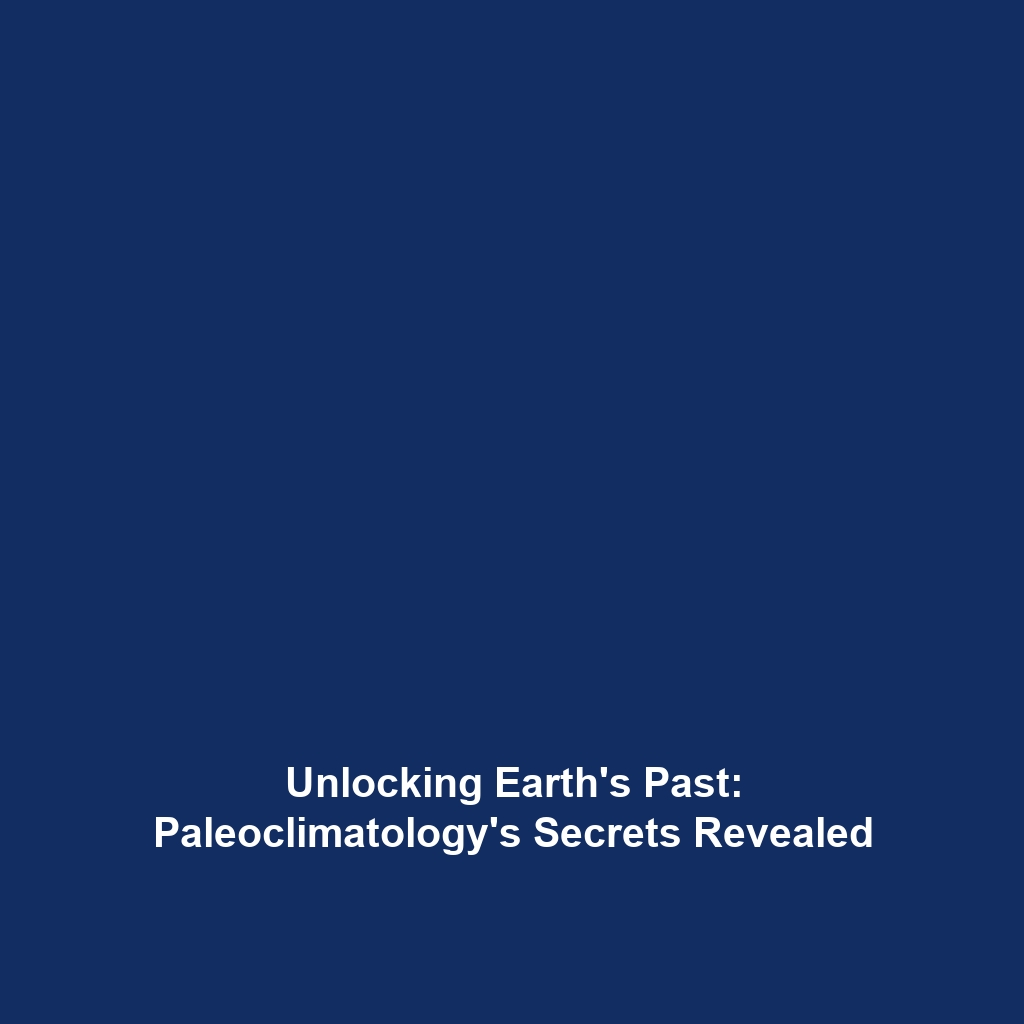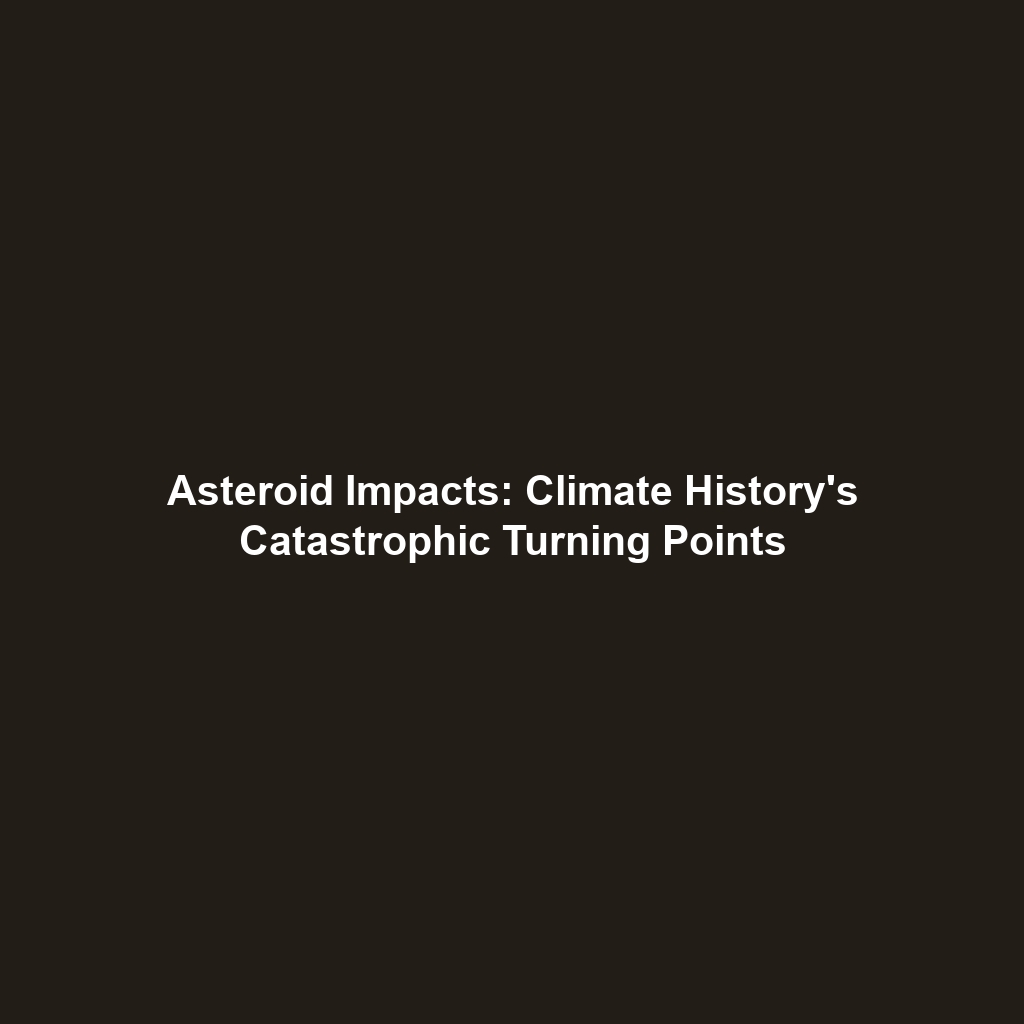Paleocene-Eocene Thermal Maximum (PETM): A Window into Climate History
Introduction
The Paleocene-Eocene Thermal Maximum (PETM) was a significant global warming event that occurred approximately 55 million years ago. This period is crucial in climate history as it offers insights into the consequences of rapid climate change. By examining the PETM, scientists gain valuable knowledge to understand the current trends in global warming, including temperature shifts and ecological impacts. This article delves into the PETM’s characteristics, its implications for understanding contemporary climate phenomena, and its relevance in the broader context of climate history.
Key Concepts
The PETM: Definition and Significance
The PETM is characterized by a rapid increase in temperatures—averaging about 5 to 8 degrees Celsius—over a span of just a few thousand years. This warming influenced global ecosystems, ocean chemistry, and biodiversity. The event is used as an analog for modern climate change, thus warranting extensive study.
Geological Evidence of the PETM
Geological records, such as sediment cores from ocean floors and land formations, provide invaluable evidence of the PETM. These records reveal isotopic changes in carbon and oxygen, indicating significant alterations in climate and atmospheric composition during this period.
Impact on Biodiversity
The PETM had profound effects on global biodiversity, leading to the extinction of some species while allowing others to thrive. Understanding these dynamics helps scientists anticipate how current climate change may alter biodiversity today.
Applications and Real-World Uses
How PETM Insights Are Used in Climate History
Research on the PETM has led to practical applications in climate science, including:
- Climate Models: Data from the PETM informs climate modeling efforts, helping predict future climate scenarios.
- Fossil Record Analysis: Understanding historical extinction events aids in assessing current biodiversity threats.
- Policy Development: Insights from the PETM guide sustainable practices and climate action initiatives.
Current Challenges
Challenges of Studying the PETM
Research on the PETM faces several limitations:
- Data Gaps: Incomplete geological records can lead to uncertainties in understanding the full impact of the PETM.
- Interdisciplinary Complexity: PETM studies require collaboration across fields (geology, biology, and climate science), which can complicate research efforts.
- Public Perception: Communicating the relevance of the PETM to modern audiences remains a challenge for researchers.
Future Research and Innovations
Innovations in PETM Research
Future research on the Paleocene-Eocene Thermal Maximum may lead to significant breakthroughs, including:
- Advanced Modeling Techniques: Utilizing next-gen computational models to simulate past climate conditions with greater accuracy.
- Genomic Studies: Investigating ancient species’ genomes to better understand evolutionary responses to climate change.
- Collaborative Data Sharing: Developing platforms for global researchers to share PETM-related data effectively.
Conclusion
The Paleocene-Eocene Thermal Maximum (PETM) serves as a critical reference point in climate history, offering invaluable insights into the processes and consequences of rapid global warming. Understanding the PETM is essential for predicting future climate scenarios and conserving biodiversity. Continued research and collaboration in this field will enhance our knowledge and inform better policies for climate action. For more on this topic, explore articles on climate change implications and biodiversity loss.

